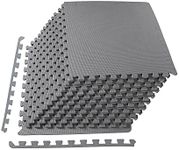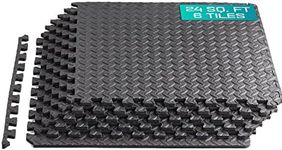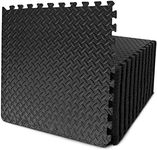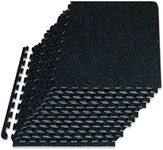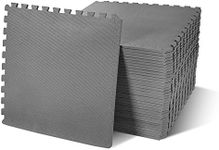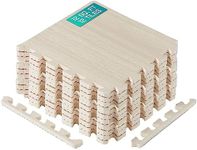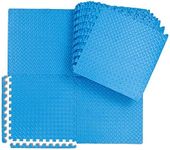Buying Guide for the Best Puzzle Mats
Puzzle mats are versatile and practical solutions for creating safe, comfortable, and customizable flooring in various settings such as playrooms, gyms, and workshops. When choosing the right puzzle mat, it's important to consider several key specifications to ensure it meets your specific needs. Understanding these specs will help you make an informed decision and select the best puzzle mat for your intended use.MaterialThe material of a puzzle mat determines its durability, comfort, and safety. Common materials include EVA foam, rubber, and PVC. EVA foam is lightweight, soft, and provides good cushioning, making it ideal for playrooms and light exercise. Rubber mats are more durable and offer better traction, suitable for gyms and heavy-duty use. PVC mats are easy to clean and resistant to moisture, making them a good choice for areas prone to spills. Choose a material based on the primary use of the mat and the level of comfort and durability you need.
ThicknessThe thickness of a puzzle mat affects its cushioning and impact absorption. Thinner mats (around 0.5 inches) are suitable for light activities and areas where you need a bit of extra comfort without too much bulk. Medium thickness mats (0.75 to 1 inch) provide better cushioning and are ideal for moderate activities like yoga or play areas. Thicker mats (over 1 inch) offer maximum cushioning and protection, making them perfect for high-impact activities like martial arts or heavy gym equipment. Consider the type of activities you'll be doing on the mat to determine the appropriate thickness.
Size and CoveragePuzzle mats come in various sizes and can be interlocked to cover larger areas. The size of individual tiles and the total coverage area you need are important factors. Smaller tiles (12x12 inches) offer more flexibility in creating custom shapes and fitting into irregular spaces, while larger tiles (24x24 inches or more) cover more area quickly and are easier to assemble. Measure the space where you plan to use the mat and calculate the number of tiles required to cover it. Choose a size that fits your space and allows for easy assembly and customization.
Texture and Surface FinishThe texture and surface finish of a puzzle mat affect its grip and comfort. Smooth surfaces are easy to clean and provide a sleek look, but they may be slippery when wet. Textured surfaces offer better traction and are safer for activities that involve a lot of movement, such as exercise or play. Some mats have a dual-sided design with different textures on each side, providing versatility. Consider the type of activities and the level of grip you need when choosing the texture and surface finish of your puzzle mat.
Interlocking MechanismThe interlocking mechanism of puzzle mats ensures that the tiles stay securely connected during use. Some mats have simple jigsaw-style edges, while others feature more complex locking systems for added stability. A secure interlocking mechanism prevents the tiles from separating, which is important for safety and maintaining a smooth surface. If you plan to use the mat for high-impact activities or in a high-traffic area, look for mats with a robust interlocking system. For less demanding uses, a basic interlocking design may suffice.
Ease of CleaningEase of cleaning is an important consideration, especially if the mat will be used in areas prone to spills or dirt. Some materials, like PVC, are naturally resistant to moisture and can be easily wiped clean with a damp cloth. EVA foam mats may require more careful cleaning to avoid damage. Look for mats that are water-resistant and have a smooth surface for easy maintenance. Consider how often the mat will need to be cleaned and choose a material and finish that align with your cleaning preferences.
